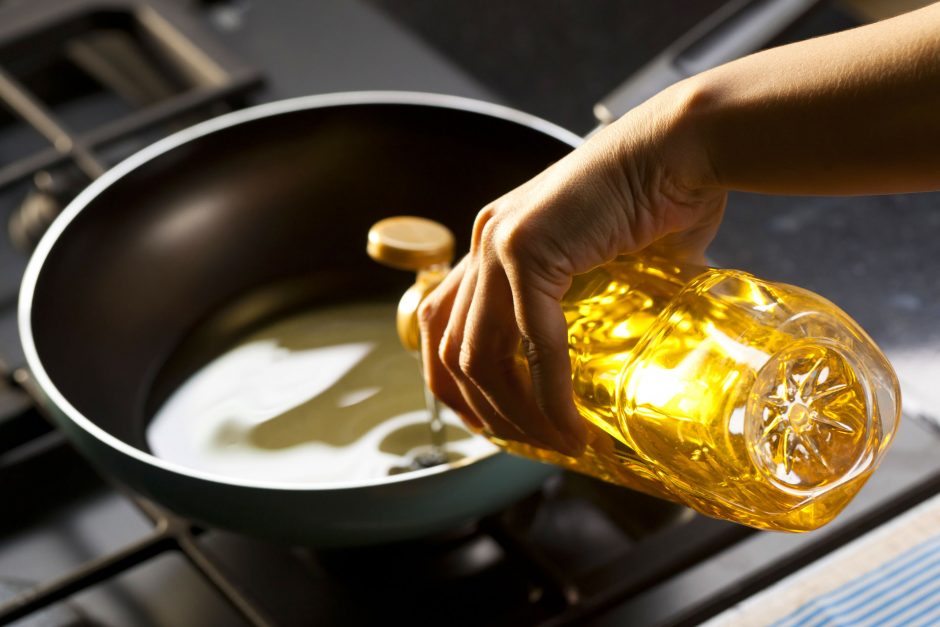Crispy outside, tender on the inside – this is what people usually describe as an excellently cooked fried chicken. Read the article about 6 Best Practices When Reusing Cooking Oil.
Although frying is one of the smelliest and messiest parts of its preparation, it also makes the fried chicken crisp and tender. You have cooking oil to thank for that.
But the thing about deep frying is that it uses up too much oil than people care to admit. Even when you try to reduce wastage on this very important ingredient, there could still be ways you can improve cooking oil use efficiency.
Want to know the proper way to reuse cooking oil?
Here are six best practices wholesale cooking oil suppliers recommend:
- Choose the right oil.
Before you even think about the best way to recycle oil initially used for frying, you must first choose the right product to use. Remember: If your frying technique is even slightly off, you may end up with un-reusable frying oil in your hands.
Deep frying requires the right cooking oil, and you can determine that based on its smoking point that occurs during its breakdown temperature. Because the cooking method requires high temperatures, you need oil that won’t break down easily, such as peanut, canola, and vegetable oils.
Try to avoid reusing olive oil because it is pricey, burns easily and has a dominant flavor that can ruin the taste of your deep-fried dish. Its fragrance and flavor also tend to deteriorate when heated for a long time.
- Practice good temperature control.
The key to preventing deep-frying disasters is temperature control. If you can maintain the ideal temperature, you can avoid too soggy food (from cooking with low-temperature oil). It also helps prevent your food from becoming too blitzed outside but raw on the inside because of too-hot cooking oil.
More importantly, controlling the oil temperature expertly preserves its longevity.
To practice excellent control over the temperature, you need a high-heat thermometer. Try to look for one that goes up to 400 degrees Fahrenheit.
While the oil heats up, keep your hand on the range or stove dial. Pause the increase in temperature as you add new batches of food in between frying while monitoring the thermometer.
- Let the oil cool first.
Once you’re done frying, you must allow the cooking oil to cool first. This will help prevent oil burns and messy oil transfers from the frying pan to a container.
Check whether the oil has cooled down to room temperature using your thermometer. Only then can you transfer it safely into your used oil container.
- Filter used oil thoroughly.
When storing used oil, make sure you filter any food debris using a cheesecloth-lined fine-meshed strainer. Never leave food particles behind for too long as those can ruin the flavor of your dish and could burn easily once the oil is reheated.
- Use a clean container to store the cooking oil.
Always store cooking oil you wish to recycle in a clean container. You could use a glass jar or the bottle the cooking oil came with if you were able to save it (and it does not contain any unused oil).
When transferring the liquid, use a funnel to avoid unnecessary messes. Then, put the container in a cool, dry place – not near the oven or over the microwave or fridge where it can get too hot.
- Avoid reusing oil too many times.
Reusing cooking oil is okay only for the first few times. Once it’s destabilized, it’s time to let it go.
You’ll be able to tell easily once the oil is decomposed, but you shouldn’t wait until then before you dispose of it. Experts say that hot oil tends to polymerize (a process where molecules merge into bigger ones), giving it a dark hue and thick, gummy consistency.
Don’t wait for this to happen. Instead, get rid of the oil once it already has foam on top or looks a bit cloudy.
If you can’t tell with your eyes, you should trust your nose to determine when it’s time for the cooking oil to go. If it already gives off an acrid, rancid, or off scent, toss it out (not literally, of course).
Even if you aren’t able to reuse it, make sure you get rid of oil that’s already one to two months old.
Reusing Cooking Oil: What to Keep in Mind
Before you decide to reuse cooking oil for your restaurant or at home, you must first think about a few things:
- Cooking oil would carry the flavor of whatever you fried in it first. To avoid making your other dishes taste different, try to reuse the oil with items that have similar flavors.
- If possible, adjust your order of cooking based on how much debris and flavor the food item you’re frying leaves on the oil. Cook vegetables first because they leave the least amount of flavor and debris. On the other hand, batter and breaded items tend to transfer a lot of particles to the oil, so leave those for last.
- Avoid pouring cooking oil for disposal down the drain. Instead, put it back into a sealed container and throw them out together.
Even if you purchase high-quality products from frozen meat suppliers in the UAE, how a dish comes out would still boil down to the method of cooking.
Buy meat online that’s all you need to make your dinner delightful.
And when it comes to frying with used cooking oil, care should be taken in the cooking process to get the best results. So, keep the best practices listed here and other important considerations in mind when reusing cooking oil.

